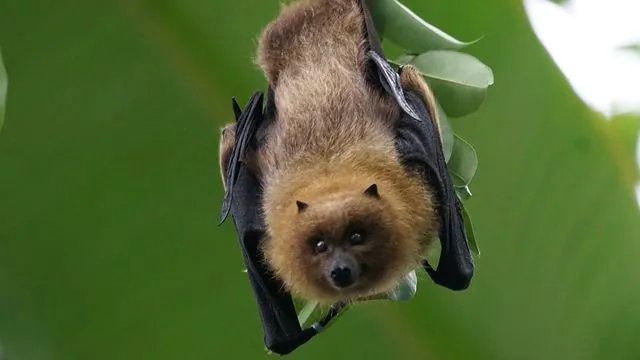
Bats Show Incredible Adaptability to Hearing Loss Through Built-In Neural Strategies
2024-11-25
Author: Daniel
Bats Show Incredible Adaptability to Hearing Loss Through Built-In Neural Strategies
Bats, known for their reliance on sound for navigation and hunting, have demonstrated an astonishing ability to adapt when faced with hearing impairments, as revealed in a groundbreaking study from Johns Hopkins University published in Current Biology. This significant research uncovers the potential for innate compensatory mechanisms not only in bats but possibly in other animal species and humans as well.
A Closer Look at the Experiment
The innovative study involved training bats to navigate a corridor and fly through a window in search of a reward. To assess their adaptability, researchers temporarily blocked a critical auditory pathway in the bats' midbrains using a reversible drug technique, effectively silencing major auditory signals sent to the brain. Remarkably, despite this significant impairment, the bats swiftly modified their flight and echolocation behaviors to complete their task successfully. Although they showed reduced agility and occasionally collided with obstacles, their ability to adapt was evident.
Dr. Cynthia F. Moss, a leading researcher, commented on the bats' flexibility: "Bats have this amazing flexible adaptive behavior that they can employ anytime."
Understanding Echolocation
Echolocation is the biological process where animals emit sound waves and interpret the returning echoes to orient themselves and locate objects. Bats primarily rely on this technique for flight and hunting, making the findings of this study particularly intriguing.
Key adaptive behaviors observed in the bats included: - Flying closer to surfaces for better spatial awareness. - Increasing the number and duration of echolocation calls. - Broadening the frequency range of calls to enhance the strength of returning echoes.
These findings indicate that bats are able to utilize pre-existing neural circuits to compensate for auditory deficits.
The Science of Hard-Wired Compensation
Notably, it was found that these adaptations were hard-wired rather than learned behaviors. The bats did not improve their performance with repeated attempts, suggesting that the compensation strategies are embedded within their neural architecture. This inherent flexibility illustrates the resilience of the brain when faced with sensory challenges.
Broader Implications for Auditory Processing
Interestingly, the bats retained some level of hearing despite the midbrain disruption, leading researchers to speculate about the presence of alternative auditory pathways or compensatory mechanisms in unaffected neurons that may facilitate bypassing the damaged areas.
Dr. Moss expressed the potential broader implications of the study, stating, “Can this work tell us something about auditory processing and adaptive responses in humans? Since no one has done this, we don’t know. The findings raise important questions that will be exciting to pursue in other research models.”
The team plans to extend their research to explore whether these adaptive mechanisms are observed in other species and potentially in humans. Gaining insights into these innate strategies could lead to advancements in understanding auditory processing and rehabilitation approaches in human patients.
This pivotal research exemplifies the incredible adaptability of bats and opens a new avenue for exploring the intricacies of sensory processing across various species. Future studies could unlock secrets that may not only inform veterinary care but also enhance therapeutic strategies for individuals suffering from hearing impairments.



 Brasil (PT)
Brasil (PT)
 Canada (EN)
Canada (EN)
 Chile (ES)
Chile (ES)
 España (ES)
España (ES)
 France (FR)
France (FR)
 Hong Kong (EN)
Hong Kong (EN)
 Italia (IT)
Italia (IT)
 日本 (JA)
日本 (JA)
 Magyarország (HU)
Magyarország (HU)
 Norge (NO)
Norge (NO)
 Polska (PL)
Polska (PL)
 Schweiz (DE)
Schweiz (DE)
 Singapore (EN)
Singapore (EN)
 Sverige (SV)
Sverige (SV)
 Suomi (FI)
Suomi (FI)
 Türkiye (TR)
Türkiye (TR)